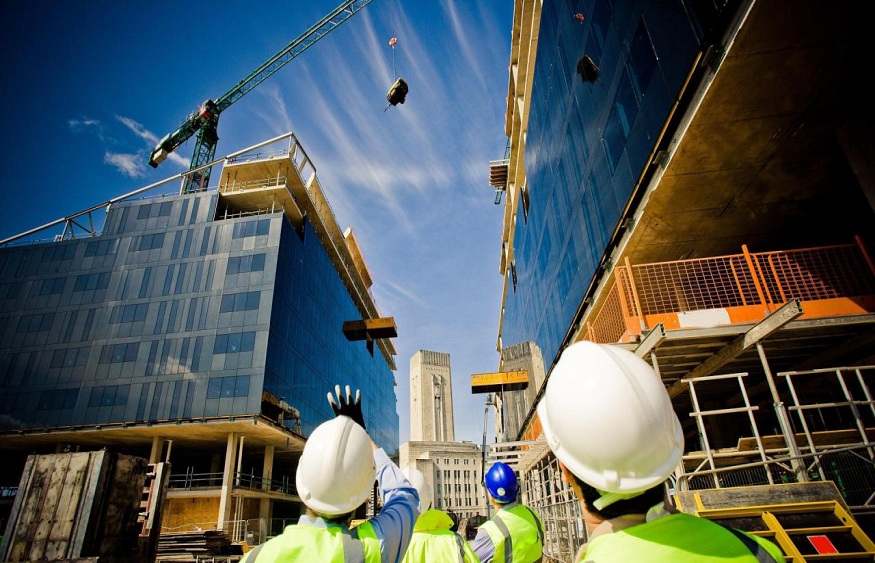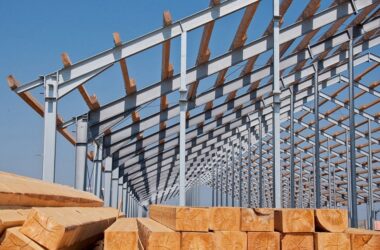When embarking on a construction project, choosing the right building materials is one of the most crucial aspects. Whether it’s a residential building, commercial complex, or infrastructure project, making the correct choice can ensure a long-lasting and visually appealing structure that meets the desired specifications. That said, architects, engineers, and construction professionals must carefully evaluate numerous factors before finalizing materials.
Each construction project is unique, and the material selection process should account for the specific requirements and constraints of the project. Below we will delve into 15 essential factors considered for selection of materials:
Cost
Finding a balance between the initial investment and long-term benefits is essential. While choosing less expensive materials might seem tempting due to lower upfront costs, think about their durability and maintenance needs. Investing in high-quality, long-lasting materials may cost more initially, but can save money in the long run by reducing the frequency of repairs and replacements. Therefore, you should carefully assess the cost-effectiveness of materials, considering their lifespan, maintenance requirements, and overall value to the project.
Availability
The availability of locally sourced construction materials greatly influences choices, as they are often more affordable and accessible. When selecting building materials for home projects, prioritizing locally available options can make a significant difference in both cost and performance. Using materials available in the local market reduces transportation costs, shortens delivery times, and supports the local economy. Additionally, local materials are typically better suited to the region’s climate and environmental conditions,ensuring a more sustainable and efficient structure.
Durability
A durable structure needs materials that resist environmental factors like moisture, temperature changes, and physical stress. Selecting durable materials ensures a long-lasting project, cutting maintenance costs and future risks. Therefore, it’s vital to prioritize solid and resilient materials that can handle the specific conditions at the project site.
Aesthetics
Materials significantly impact a project’s aesthetics and appearance. Whether residential, commercial, or public, the visual impact leaves a lasting impression. To align with your aesthetic vision, you must evaluate textures, colors, and finishes. Combining visually appealing materials enhances the ambiance, showcases style, and highlights the architectural design.
Weight
Material weight plays a significant role in structural design and foundation requirements for construction projects. Heavier materials demand more robust foundations and support to ensure stability, whereas lighter materials offer greater design flexibility and potentially reduced foundation needs. Therefore, balancing material weight and structural demands is essential for constructing safe, efficient, and durable buildings.
Strength
Material strength is crucial for a structure’s stability and load-bearing capacity. Choosing materials with suitable strength properties ensures safety and durability. Structural integrity, resistance to external forces, and the ability to withstand anticipated loads must be considered when selecting materials.
Maintenance
Considering maintenance requirements is vital for long-term cost-effectiveness and easy upkeep. Low-maintenance materials reduce frequent repairs and replacements, saving time and money. Choosing durable, corrosion-resistant, and low-maintenance materials enhances the structure’s overall efficiency and longevity.
Insulation
Insulating properties of building materials affect energy efficiency and indoor comfort. Excellent insulation regulates temperature, reduces heat transfer, and minimizes energy consumption for heating and cooling, lowering utility costs and improving occupant comfort.
Fire Resistance
Selecting fire-resistant materials ensures occupant safety and limits fire spread. They are designed to withstand high temperatures and delay ignition, slow flame spread, and emit low smoke and toxic gases. Incorporating fire-resistant materials reduces property damage risk and allows time for evacuation and firefighting.
Acoustic Properties
Acoustic properties of building materials and construction impact sound transmission, noise control, and privacy. Sound-absorbing materials minimize unwanted noise, enhance speech clarity, and create acoustically pleasant environments in spaces like offices, classrooms, or residential areas.
Sustainability
Environmental awareness prioritizes sustainable and eco-friendly materials. These materials minimize resource depletion, reduce pollution, and promote recycling and renewables. Using sustainable materials reduces carbon footprint, improves indoor environments, and supports a greener future.
Local building codes
Selecting construction materials requires adherence to local building codes and regulations, which set safety and performance requirements. Following these guidelines ensures structural integrity, mitigates risks, and provides a secure environment for occupants. Building codes address aspects like fire safety, structural stability, electrical systems, and environmental considerations.
Climate
The local climate is one of the crucial factors affecting site selection, as it can impact the performance and durability of materials. For example, materials that are resistant to moisture or can withstand thermal expansion and contraction are often preferred in areas with high humidity or extreme temperatures.
Site conditions
Site conditions, such as soil type and water table, affect material choices, especially for foundations. Soil stability, drainage, and groundwater presence impact decisions on materials like concrete, steel, or special foundation systems. This ensures structural integrity and avoids problems like settlement or water damage.
Construction method
Different construction techniques require unique materials. For example, traditional methods may use natural materials like wood and stone, while modern techniques prefer advanced materials like steel and concrete. Considering structural integrity, ease of installation, and compatibility with the chosen method ensures optimal performance and efficiency.
Tata Structura: Your Go-To Partner for Superior Building Materials
Understanding the various factors affecting the selection of construction materials is crucial for the success of any construction project. With a rich legacy of expertise and innovation, Tata Structura offers a wide range of high-quality materials required for construction, known for their strength, durability, and versatility. These precision-engineered sections are designed to meet the diverse needs of modern construction projects, from residential buildings to commercial complexes. Tata Structura’s commitment to sustainability is reflected in its eco-friendly manufacturing processes and adherence to stringent quality standards. With Tata Structura as your go-to partner, you can be confident in the performance, reliability, and aesthetic appeal of your construction projects.






